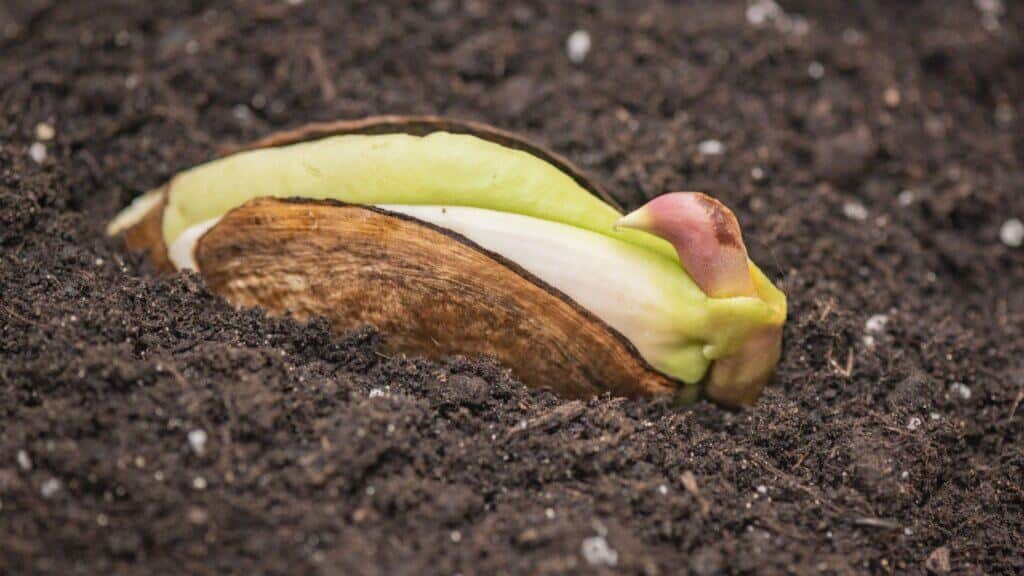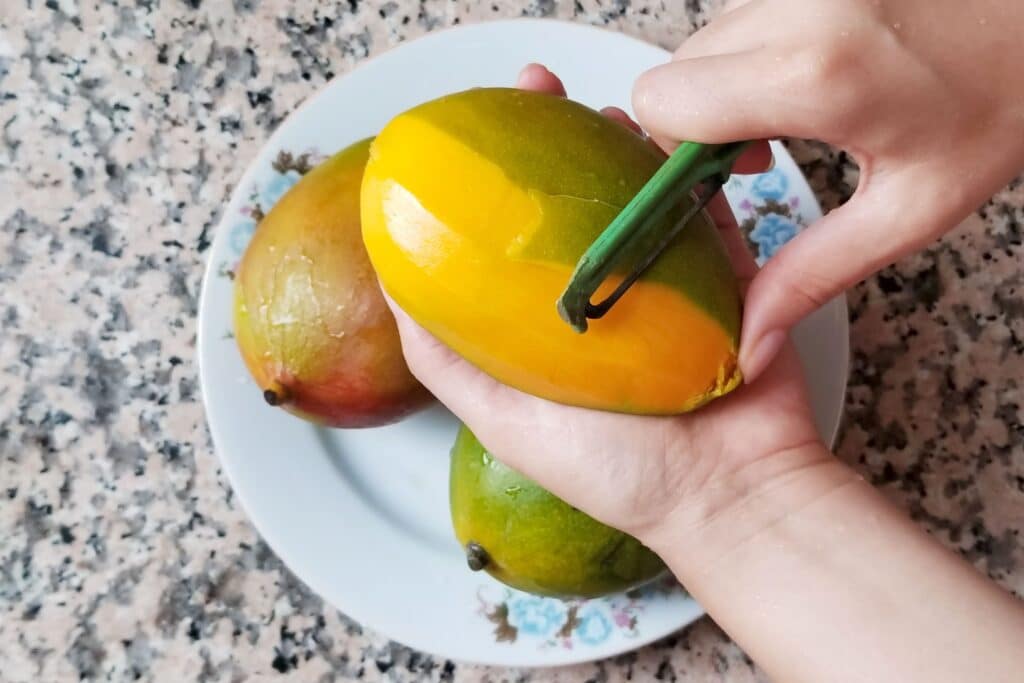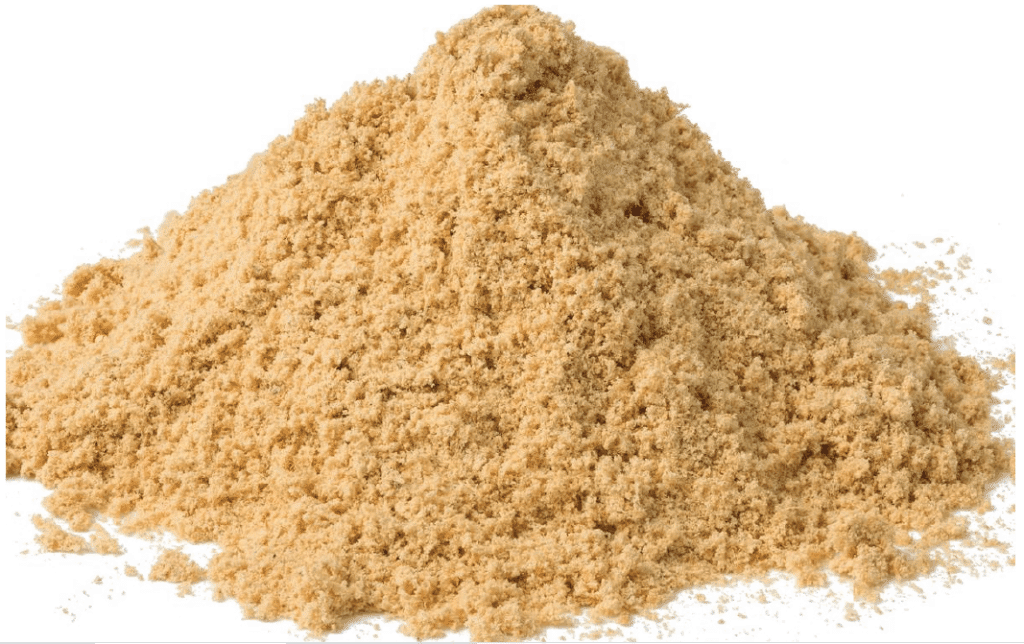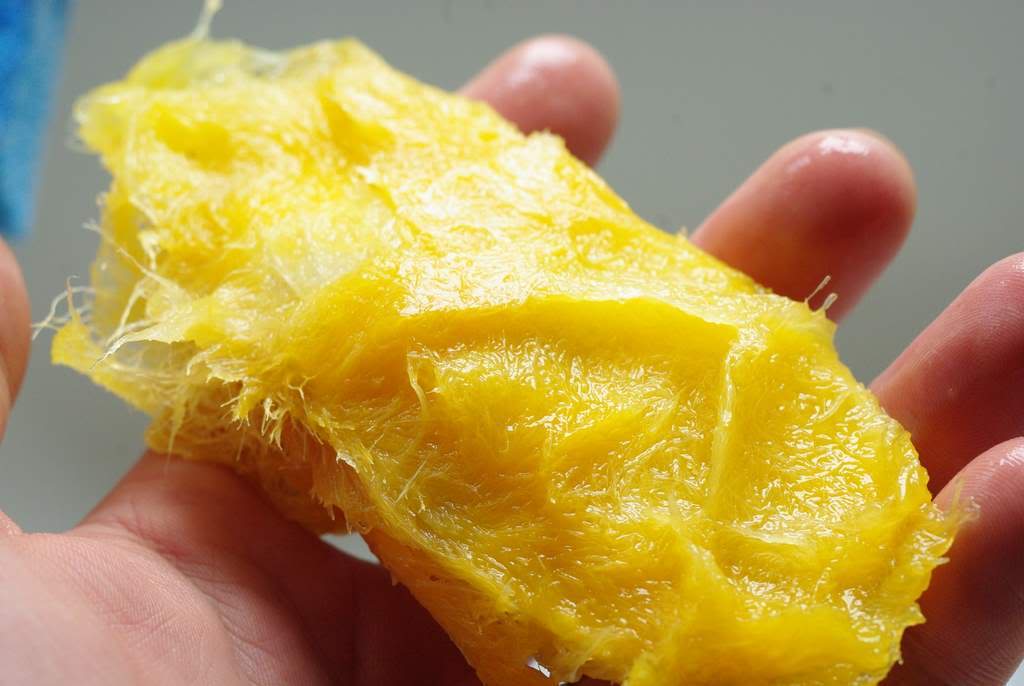Table of Contents
Let’s be honest… most of us devour a mango like it’s the best gift on Earth and then toss the huge seed straight into the trash. No guilt, no second thought, nothing.
But here’s the twist: That big hard seed you ignore? It’s basically a hidden nutrient bomb. Yep — the part you throw away every single time has actual health benefits. And that’s why today, we’re diving deep into whether you should eat mango seed, if it’s safe, how to prepare it, and why people have been using it for centuries.
Wait… Can You Actually Eat Mango Seed?
This is the #1 question everyone asks:
“Can you eat mango seeds?” And the short answer is:
Yes, but not the way you might be imagining. You can’t just take the giant pit and chew through it like a walnut. Please don’t. The outer shell is hard, fibrous, and totally NOT edible. But inside that tough shell is a soft, nutrient-packed kernel. And that inner kernel is the part people refer to when they talk about the benefits of eating mango seed.
Short answer to all of those: The inner seed = yes.The outer shell = nope.
And fun fact: many cultures around the world have been using the seed for hundreds of years. We’re just rediscovering it.
Why People Started Eating Mango Seed in the First Place

Credit: plantinfo.co.za
Mango trees grow in warm climates, and in many tropical regions, nothing goes to waste — not even the seed. Traditional healers used mango seed powder for everything from stomach issues to hair growth to dental care.
In Ayurveda, mango seed is considered grounding and nourishing. In African and Asian cultures, it’s used for digestion, skin care, and even natural deodorants. This isn’t new. We’ve just been ignoring it because we’re used to tossing the pit aside after enjoying the fruit. Meanwhile, other cultures have been asking for ages: “Why NOT eat mango seed?” Honestly… good question.
What’s Actually Inside Mango Seeds? (This Might Surprise You)
If you crack open a mango pit and look inside, you’ll find a soft, light-colored kernel that gets harder as it dries. That little kernel is PACKED with good stuff, like:
Healthy Fats
- Oleic acid
- Stearic acid
- Palmitic acid
These fats support heart health and steady energy.
Minerals
- Magnesium
- Potassium
- Calcium
- Iron
Kind of wild that all this goodness hides inside something we treat like trash, right?
Antioxidants & Plant Compounds
- Polyphenols
- Mangiferin
- Flavonoids
- Tannins
These help fight inflammation and oxidative stress — a big win for your skin, heart, and immune system.
About Mango Seed Benefits (The Fun Part)

Credit: masteringhorticulture.blogspot.com
Here’s where things get good.
When you eat mango seed — whether powdered, roasted, or dried — your body gets access to several helpful benefits:
Supports Better Digestion
Ever felt a bit off after eating something heavy?
Mango seed powder has natural astringent properties that help calm the stomach. Traditional healers even used it to support digestion and ease mild diarrhea.
So yes… your half eaten mango seed has more uses than you thought.
Helps Maintain Cholesterol Levels
Thanks to those healthy fats and antioxidants, mango seed supports heart health. Some studies suggest it may help maintain healthy cholesterol levels.
No wonder people grind it into smoothies.
Gives Your Skin a Natural Glow
Many skincare lovers swear by mango seed powder because it’s gentle enough to exfoliate without irritating the skin. It’s like a natural polishing powder.
Smooth skin, zero chemicals.
Can’t beat that.
Helps Strengthen Hair
If you’ve ever struggled with dry or dull hair, mango seed oil might be your new best friend. It moisturizes the scalp, supports hair growth, and adds shine.
People actually melt the seed fat and mix it with castor oil for a DIY hair mask.
Offers Antioxidant Protection
The seed is loaded with antioxidants — which means it helps your body manage everyday stress, free radicals, pollution, and everything else life throws at you.
It Costs… Nothing
Seriously. Mango seeds cost ZERO dollars.
You’re literally throwing away a free superfood.
Is Eating Mango Seed Safe? Here’s the Truth

Credit: tasteofhome.com
Okay, so here’s where we need to be clear.
Eating mango seed = YES, safe.
Eating the hard outer shell = NOPE.
The inner kernel must be:
- Dried
- Roasted
- Or powdered
Raw? Not great. Whole? Definitely don’t. Prepared properly? Absolutely safe. If you’re ever unsure, just remember: The soft inside is the good part.
How to Prepare Mango Seed (Step-by-Step, Super Simple)
Let’s walk through how to turn your mango seed from “trash” into something healthy.
Step 1: Wash the Seed
After eating the mango, wash off all the fibers stuck to your ripe mango seed.
Step 2: Dry It
Place it in the sun or on the counter for 3–7 days. The shell should get hard.
Step 3: Crack It Open
Use a nutcracker, hammer, or knife (carefully!) to open it. Inside you’ll find the edible nugget.
Step 4: Dry or Roast the Kernel
This improves taste and kills moisture.
Step 5: Grind into Powder
You now have mango seed powder you can use in recipes, drinks, and skincare. Easy and fun.
How to Use Mango Seed Powder (You’ll Love These)

Credit: justgotochef.com
Before we dive into the details, here’s a quick preview of how easily you can use mango seed powder in everyday food, hair care, and even skincare routines.
For Food
Mango seed powder blends beautifully into everyday recipes, adding a subtle nutty flavor and a boost of nutrients. Try these simple ideas:
- Add to smoothies
- Mix into teas
- Stir into yogurt
- Sprinkle on oatmeal
- Combine in cookies or bread
- Add to warm milk at night
For Hair
Your hair can benefit so much from the nourishing oils in mango seed. Here are a few easy ways to use it:
- Mix with coconut or castor oil
- Use as a scalp treatment
- Add to DIY hair masks
For Skin
If you love natural skincare, mango seed powder fits right into your routine. It’s gentle, soothing, and great for glow-boosting:
- Use as a gentle exfoliating scrub
- Mix with honey for a brightening mask
- Add to homemade soaps
You’re basically turning your kitchen into a mini wellness lab — and it takes almost no effort.
What Does Mango Seed Taste Like?
Surprisingly nutty. A little bitter. A little earthy. Once roasted, it actually tastes pretty decent — almost like almond skins or pumpkin seeds.
It blends well into drinks and baked goods, so the bitterness won’t stand out.
Who Should Avoid Mango Seed?
It’s generally safe, but a few people should be cautious:
- Anyone with nut or seed allergies
- Pregnant individuals (check with a doctor)
- People with major digestive issues
- Anyone unsure about sensitivity to mango components
If that’s not you, you’re good to go.
FAQ’s
Curious? Here are a few FAQs that answer the questions everyone asks.
Can you eat a mango seed raw?
Nope. It must be dried or roasted.
Can you eat the inside of a mango seed?
Yes! That’s the edible part.
What are the main mango seed benefits?
Better digestion, healthier hair, glowing skin, and antioxidant support.
How much should I take daily?
Start with ½–1 teaspoon of powder.
Can I chew the hard outer pit?
Absolutely not — only the inner kernel is edible.
The Bottom Line
Honestly? Yes, you should at least try it.
If you’re someone who loves natural remedies, hates wasting food, or simply wants to experiment with something new and healthy, then eating mango seed is a surprisingly cool option. We’ve been tossing away a free source of nutrients without even realizing it. But now you know better — and next time you finish your mango, you might just look at that seed differently.

